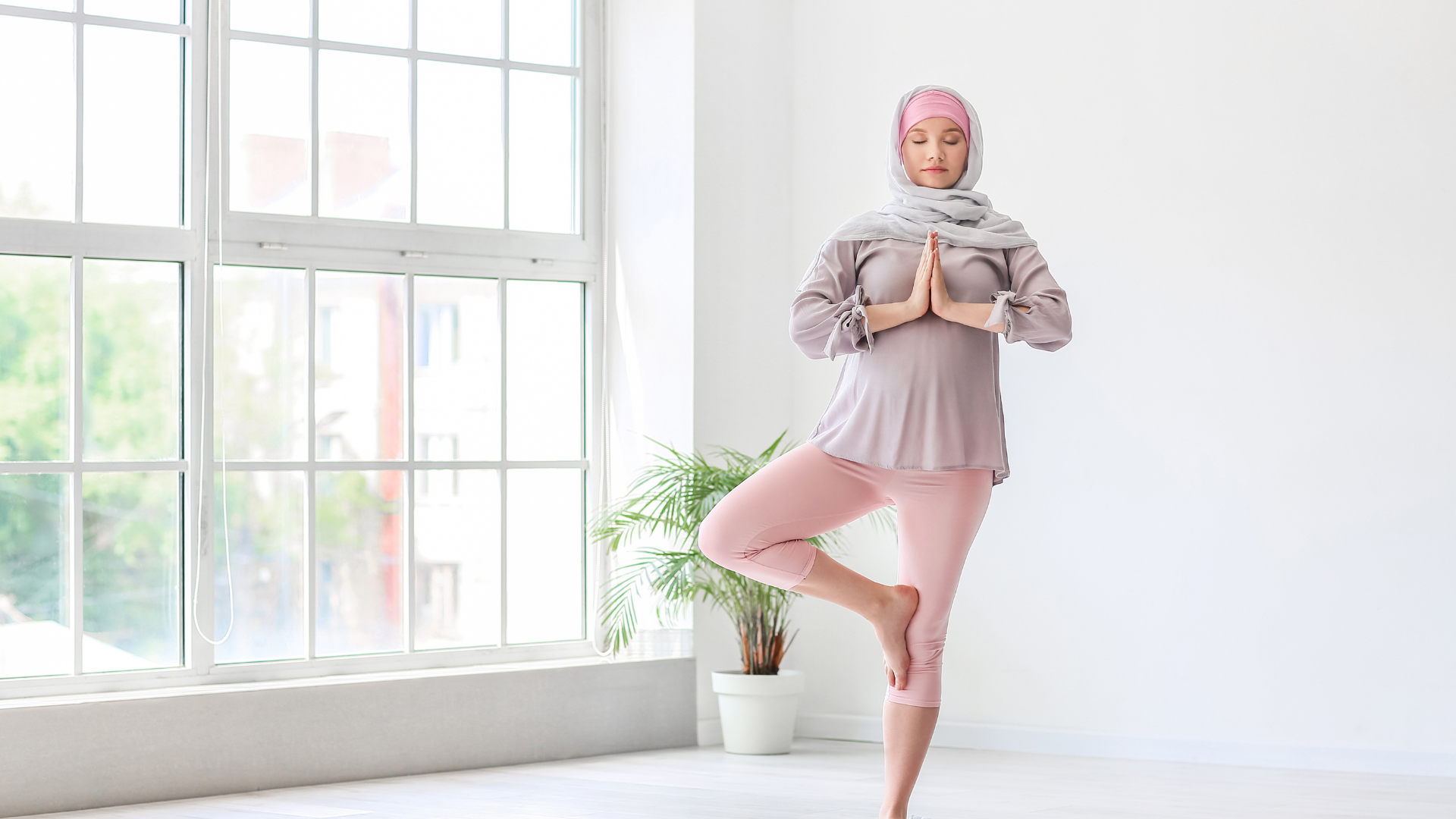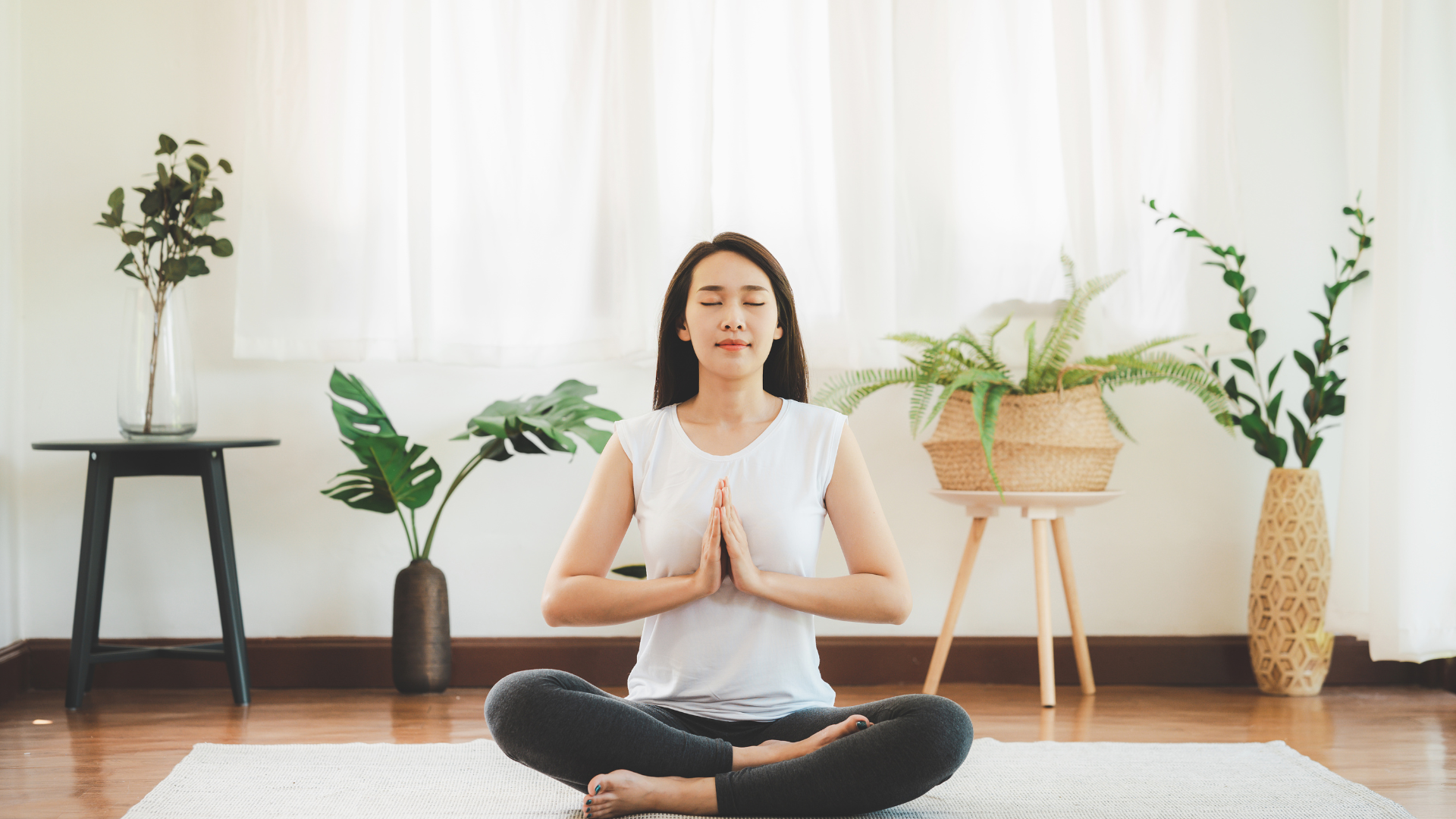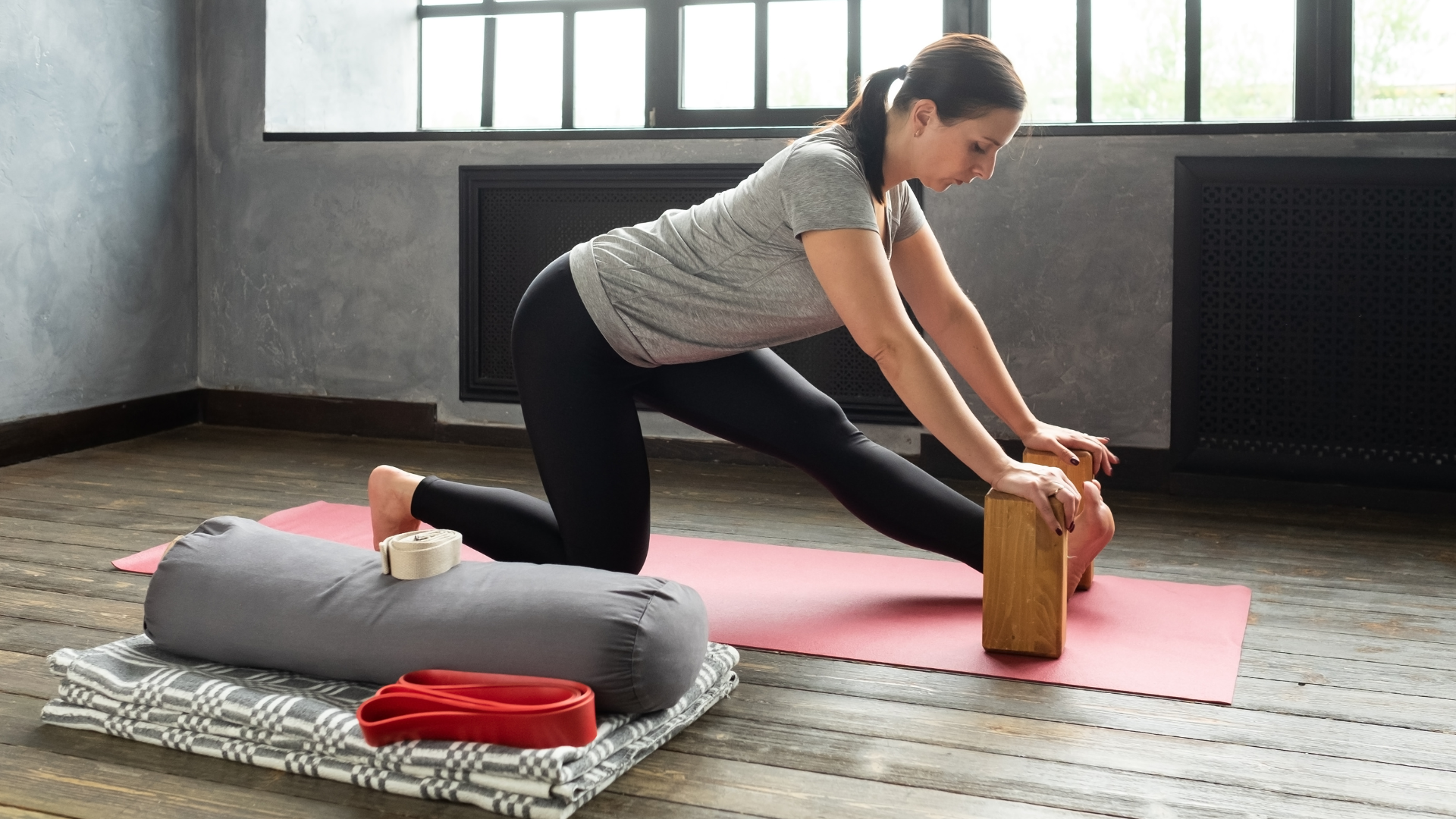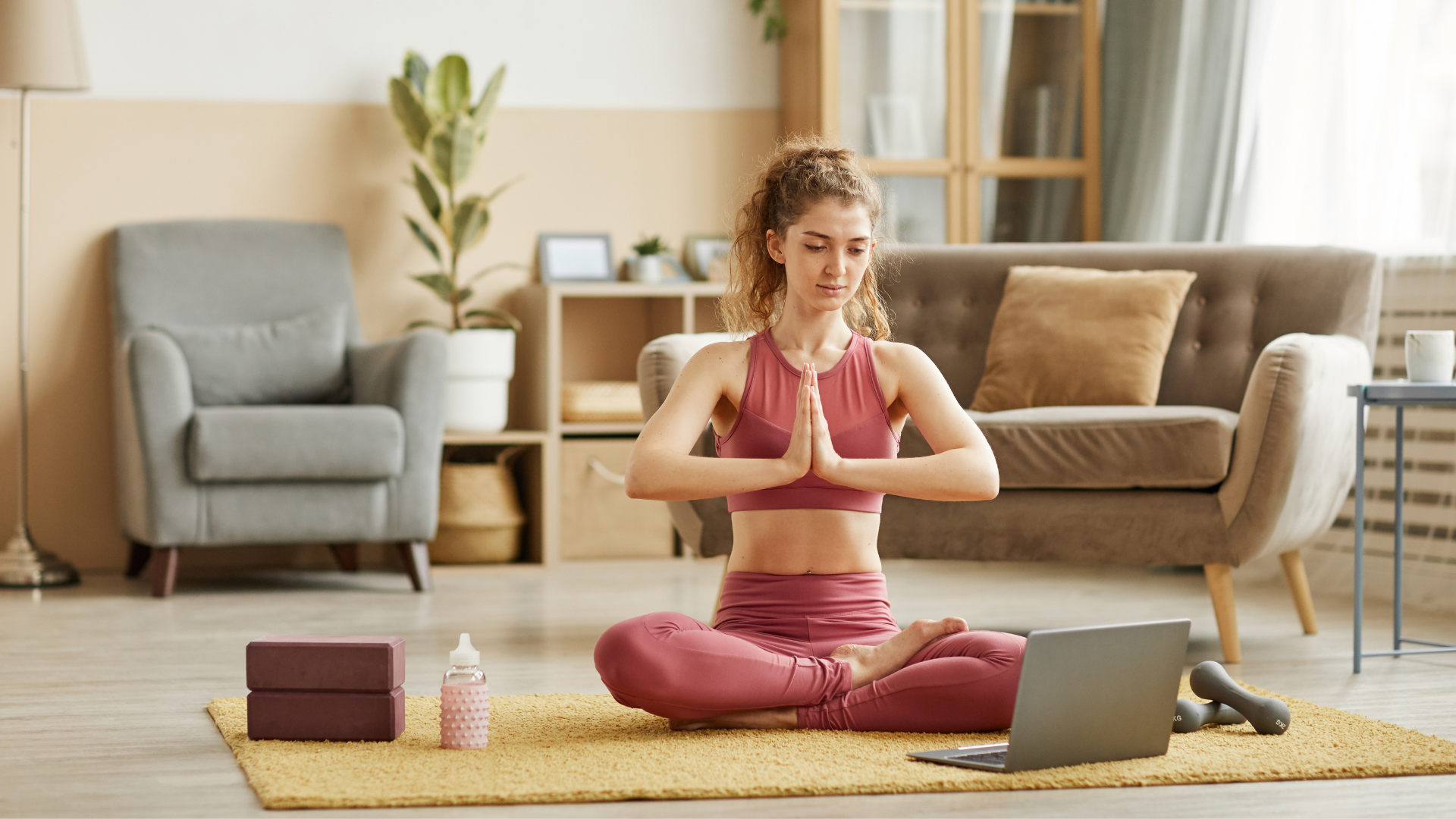How to Create the Perfect Home Yoga Space?
Creating the perfect home yoga space is more than just setting aside a corner of your house; it’s about crafting an environment that nurtures relaxation, focus, and inspiration. Whether you’re an experienced yogi or just starting out, a dedicated space can significantly enhance your practice. This guide will take you through the steps to create a serene and inviting yoga space in your home, ensuring every detail contributes to your journey toward inner peace and physical well-being.
1. Choosing the Right Location

- Quiet and Calm: The foundation of your yoga space is its location. Select a quiet area where you can attend your online yoga classes without interruptions. This could be a spare room, a corner of your bedroom, or even a section of your living room. The key is to find a spot that feels peaceful and allows you to escape from daily distractions. Consider the acoustics of the space; a quieter area will help you maintain concentration and enjoy a more immersive practice.
- Natural Light: Natural light plays a crucial role in creating an inviting and energizing yoga space. Aim for a location with plenty of natural light, such as near a window or under a skylight. Sunlight not only brightens the space but also boosts your mood and energy levels, making your practice more enjoyable. If natural light is limited, use soft, warm artificial lighting to create a cozy and welcoming atmosphere.
- Ventilation: Good airflow is essential for a comfortable practice. Ensure your space is well-ventilated, either through windows or fans, to keep the air fresh and invigorating. Proper ventilation prevents the space from feeling stuffy and helps you maintain your energy levels throughout your practice.
2. Creating a Comfortable Surface
- Yoga Mat: Investing in a high-quality yoga mat is paramount. Your mat is the foundation of your practice, providing the cushioning and support needed for various poses. Choose a mat that suits your needs and preferences, considering factors such as thickness, texture, and material. A good mat will enhance your stability and comfort, making your regular online yoga classes more effective and enjoyable.
- Additional Padding: If you have hard floors, consider adding extra padding underneath your mat. You can use a thick rug or foam tiles to protect your joints and enhance comfort, especially during seated or floor-based poses. This additional padding can make a significant difference, particularly for sensitive knees or wrists.
3. Personalizing Your Space

- Decorate Mindfully: Adorn your yoga space with items that inspire tranquility and positivity. The aesthetics of your space should reflect your personal tastes and the mood you wish to cultivate. Consider the following elements:
- Plants: Adding greenery can purify the air and bring a touch of nature indoors. Choose low-maintenance plants like succulents or ferns that thrive in indoor environments.
- Art: Hang calming artwork or posters that resonate with your practice. Images of nature, mandalas, or abstract art can create a serene backdrop.
- Candles and Incense: Scents like lavender, sandalwood, and eucalyptus can enhance relaxation. Use them mindfully to set the mood for your practice.
- Statues and Symbols: Incorporate statues of deities, spiritual symbols, or meaningful objects that hold significance for you. These can serve as focal points for meditation and intention setting.
- Storage Solutions: Keep your space organized and clutter-free by using shelves, baskets, or cabinets to store your yoga props when not in use. A tidy space helps maintain focus and clarity during your practice. Consider multi-functional storage solutions that blend seamlessly with your decor, ensuring that everything you need is within easy reach without disrupting the visual harmony of the space.
4. Setting the Mood with Sound
- Music and Nature Sounds: Create a playlist of soothing music or nature sounds to accompany your practice. Whether it’s soft instrumental tunes, chanting, or the sound of ocean waves, find what helps you relax and immerse yourself in your practice. Music can set the tone and pace of your session, enhancing the overall experience.
- Silence and Quiet: Sometimes, the best soundtrack is silence. Embrace the natural sounds of your environment, like birds chirping or the rustle of leaves, to deepen your connection with the present moment. Practicing in silence can heighten your awareness and allow you to tune into your breath and movements more acutely.
5. Incorporating Essential Props

- Yoga Blocks and Straps: These props are invaluable for modifying poses and achieving proper alignment. They provide support and make your practice more accessible, especially for beginners. Blocks and straps can help you deepen stretches, maintain correct form, and avoid injury.
- Bolsters and Cushions: Bolsters and cushions are perfect for restorative poses and meditation. They offer comfort and support, allowing you to relax more deeply. Use them to enhance poses like supported backbends or seated meditations, making it easier to maintain these positions for extended periods.
- Blankets: Keep a few blankets handy for added warmth and support in various poses. They can also double as props for seated and lying positions, providing extra cushioning or elevation when needed. Blankets are versatile tools that can be folded or rolled to suit different needs.
Check out our blog on “What Equipment Do You Need to Start Practicing Yoga at Home?” to know about other equipment for practicing yoga at home.
6. Embracing Technology Mindfully
- Guided Practices: Utilize technology to enhance your home yoga practice. There are numerous apps and online platforms offering guided yoga sessions, meditation practices, and tutorials. Select those that align with your goals and preferences. These resources can provide structure, variety, and expert guidance, helping you progress in your practice.
- Minimal Distractions: While technology can be a great tool, it’s important to minimize distractions. Silence your phone and avoid checking messages or emails during your practice to maintain focus and presence. Consider using an app or setting on your device that limits notifications during your yoga sessions.
7. Setting an Intention for Your Space
- Purpose and Goals: Define the purpose of your yoga space. Is it for physical practice, meditation, or both? Setting clear intentions helps create a space that supports your goals and aspirations. Write down your goals and place them somewhere visible in your space to serve as a constant reminder of your intentions.
- Daily Rituals: Incorporate rituals that signal the beginning and end of your practice. This could be lighting a candle, saying a mantra, or taking a few deep breaths to center yourself. Rituals help create a sense of sacredness and routine in your practice, making each session a meaningful and intentional experience.
8. Adapting and Evolving
- Flexibility and Change: Your yoga space should evolve with your practice. Be open to rearranging or adding elements as your needs and preferences change. Regularly assessing and updating your space ensures it continues to inspire and support you. Don’t be afraid to experiment with different layouts, decor, and props to find what works best for you.
- Seasonal Adjustments: Make adjustments based on the seasons. In colder months, add cozy blankets and warm lighting. In the summer, opt for lighter fabrics and increased ventilation. Adapting to the seasons keeps your space comfortable and inviting year-round, ensuring that your practice remains enjoyable and aligned with the natural rhythms of the environment.
9. Integrating Mindfulness and Meditation

- Dedicated Meditation Area: A study found that practicing guided meditation for 10 days can lower stress by 14%. If space allows, create a separate nook for meditation. A comfortable cushion, a small table for candles or incense, and a serene ambiance can make a significant difference in your meditation practice. This dedicated area can serve as a sanctuary for quiet reflection and mindfulness.
- Mindfulness Practices: Incorporate mindfulness practices into your routine. Spend a few minutes in your yoga space each day to meditate, journal, or simply sit in silence. This helps deepen your connection with the space and reinforces its purpose as a sanctuary for peace and introspection. Mindfulness practices can enhance your overall well-being, helping you stay grounded and centered.
10. Inviting Positive Energy
- Cleanliness and Order: Maintain a clean and orderly space. Regularly dust, vacuum, and declutter to ensure the energy in your space remains positive and vibrant. A clean space fosters a clear mind and a focused practice. Consider using natural cleaning products to keep your space fresh and free of harsh chemicals.
- Positive Affirmations: Display positive affirmations or quotes that resonate with you. These can serve as daily reminders of your intentions and motivations, infusing your space with encouraging energy. Place them where you can easily see them during your practice, creating a visual anchor for positivity and inspiration.
Creating the perfect home yoga space is a deeply personal and rewarding endeavor. By following these guidelines, you can cultivate a sanctuary that not only supports your physical practice but also nourishes your mind and spirit. Remember, the most important aspect of your yoga space is that it feels right for you. Tailor it to your preferences, and let it evolve as you grow in your practice. Embrace the journey of creating a space that reflects your unique path in yoga, and enjoy the peace and tranquility it brings to your life.
Inquiry
If you have any questions, please feel free to reach out. We’ll be glad to help!

